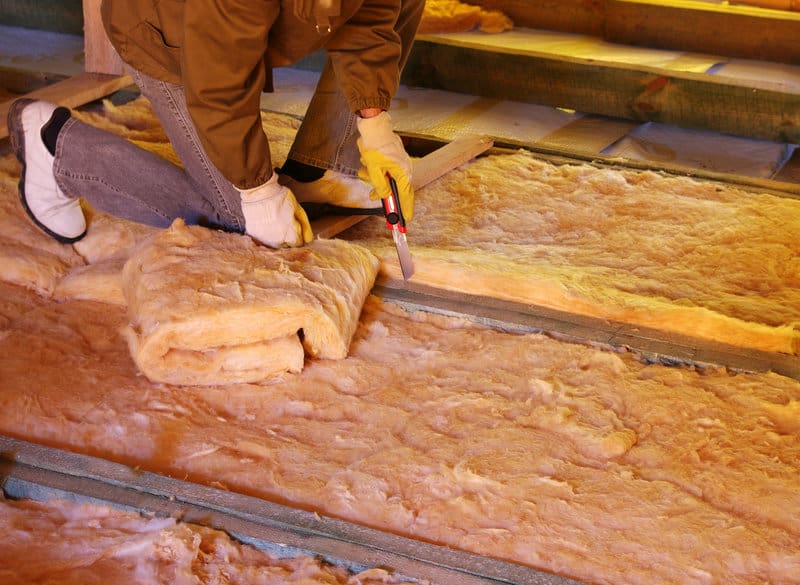
Old insulation is a leading cause of poor indoor air quality and decreased interior comfort. Your outdated insulation can also pose health concerns, especially for occupants with existing respiratory issues. Insulation is everywhere in your home, your attic, your crawl spaces, even garages can be insulated.
The reality is that all standard insulation options present some level of potential toxicity. This is why it’s so important to use a licensed insulation contractor when replacing insulation - ensuring proper precautions are taken at every step of the way.
Not sure if your attic insulation needs to be replaced? Click here to read about the sure-fire signs your insulation needs attention.
There are three main reasons older insulation poses health concerns.
The majority of insulation installed prior to ten years ago is fiberglass insulation that is laid down (or rolled out) in what looks like soft, puffy sheets or batts. Fiberglass batts comprise about 90% of the insulation used in U.S. residential and commercial buildings.
Fiberglass sounds exactly like what it is made from - very small, glass fibers or filaments. This is one of the reasons handling fiberglass insulation requires adequate protection in the form of safety glasses, masks, and donning clothes/caps/gloves that cover exposed skin.
While the filaments may not feel like much at first, they are as sharp as glass and will begin to irritate the skin and eyes. If inhaled, particulates irritate the lungs and - over time - continuous exposure to fiberglass leads to chronic health conditions.
The glass particles don’t break down over time so they stay in your body until they work their way into your soft tissue or your body works the filaments back out again so they begin coming out of your skin/eyes/lungs - all of which are incredibly painful and uncomfortable.
Fiberglass insulation is safe at first. Over time, though, it can break down and the filaments make their way into the air and ducts, infiltrating your home. This is why keeping an eye on your insulation, and replacing it when it shows signs of wear, breakdown, or age, is so important.
Mold is another concern for attics that are old and left largely unattended. Even if you’ve never had a roof leak, your older attic is still prone to moisture damage and mold/mildew growth from condensation. Usually, this is the result of imbalanced sealing, ventilation, and lack of a proper moisture barrier. In any case, any historic leaks or cumulative moisture damage can lead to mold and mildew growth. Bay area homes are especially vulnerable to this due to our higher humidity levels and a moderate climate that offers more warm days than not.
Once mold gets established in your insulation, the airborne spores permeate through the house via cracks, drafts, or older/leaky ducts. While you may not see evidence of mold or mildew in your home, it typically makes itself known in the form of allergy-like symptoms.
Symptoms of mold are:
Most of the time, those who are sensitive to mold notice their lungs clear and they feel much better when they leave the house, a sure sign that the trigger is coming from your home and not the environment-at-large.
A simple attic inspection, looking for signs of mold or compromised insulation, will let you know if moldy insulation is the culprit. You can also visit, How to Test for Mold Even if You Can’t See It, to learn more.
Just as mold spores permeate the air circulating through a building, so do off-gassing toxins. If your insulation products contain known toxins (most commercial products do), these can also pose potential health concerns.
For example, homes built prior to the 1980s may have urea-formaldehyde and/or asbestos-based insulation, both of which are highly toxic and are now completely banned from use. If your home has this type of insulation, it needs to be replaced immediately by a professional who has the proper equipment to keep your family safe. REMOVING THESE INSULATION TYPES IS NEVER A DIY JOB.
Spray foam insulation is touted for its eco-friendly properties due to its ability to improve energy efficiency using far less material. However, the chemical ingredients used to make the product, including polyurethane, are toxic. These toxins can slowly leach into your air space if the insulation isn’t applied properly and there isn’t a solid, sealed barrier between the insulation and your adjacent living spaces.
If your attic has a history of pest infestations, you may also have built-up toxins as the result of the pests accumulated waste products. Rodent urine and fecal matter are notoriously toxic and can carry the hantavirus, which is spread to humans via direct contact or airborne inhalation of the virus from rodent nests.
The following are the most common signs your insulation is outdated and potentially toxic - posing a health concern for the building’s occupants. If you notice any of the following signs, contact your insulation contractor to schedule insulation removal and replacement.
Worried your home or business’s insulation may pose a health concern? Contact us here at Attic Solutions to schedule an inspection, or give us a call directly at 800-556-9202 to speak with a licensed insulation professional.